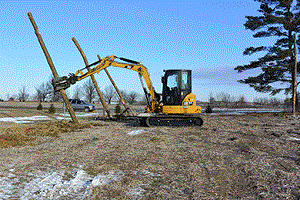By Diana Cochran
Growing hops requires a strong support structure. Constructing a stout hops yard will provide the best possible setup for growing healthy hops that can be turned into delicious beverages.

Designing and constructing a hop yard is the focus of Iowa State University Extension and Outreach publication "Hops 101: Commercial hop yard trellis design" (HORT 3051B). The publication is the second in the Hops 101 series and is written by Diana Cochran, assistant professor and extension fruit specialist with Iowa State University.
“We get a lot of calls asking how to design hop yards, specifically commercial yards,” Cochran said. “This publication is a good resource for growers wishing to set up a commercial yard in Iowa.”
The publication focuses on the design and layout elements of a hop yard, providing detailed instructions on best practices for constructing the area where the crop will be grown.
“It’s really important to pay attention to the little details and not to cut out any steps in an attempt to save money,” Cochran said. “Growers have to remember that the hop yard is the heart of their long-term investment. The trellis is the most crucial structure of a hop yard because it is what the plants are growing on.”
Solid construction also allows the hop yard to stay sound despite exposure to the elements.
“Anchoring the posts and making sure the posts are anchored around the entire perimeter of the yard and the interior posts are connected in a crisscross pattern is critical to ensure everything is stable,” said Cochran. “Every part of the yard has to be able to move together when there is wind.”
All aspects of trellis design are covered in the publication including: plot layout, line pole spacing, setting the line poles, installing top wires and installing guy wires and earth anchors.
Source: iastate.edu